-674 Austin Champ (1954-71)
Dave, congratulations with the Dinky Military 1950s article, part 2, as published in The Journal vol 8 ed 1! (and, by the way, the whole new issue, of course). May I pay attention to an interesting detail, not yet mentioned?
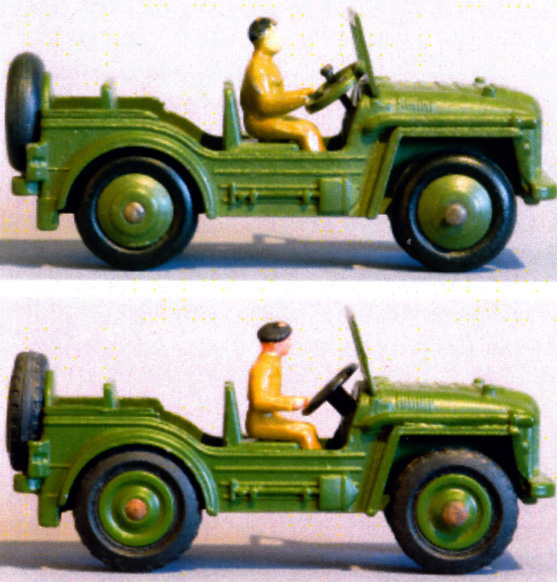
In the article two versions of the Austin Champ were shown, an early one with metal hubs and driver (on top), and a later one, of the 1960s, with plastic hubs and driver.
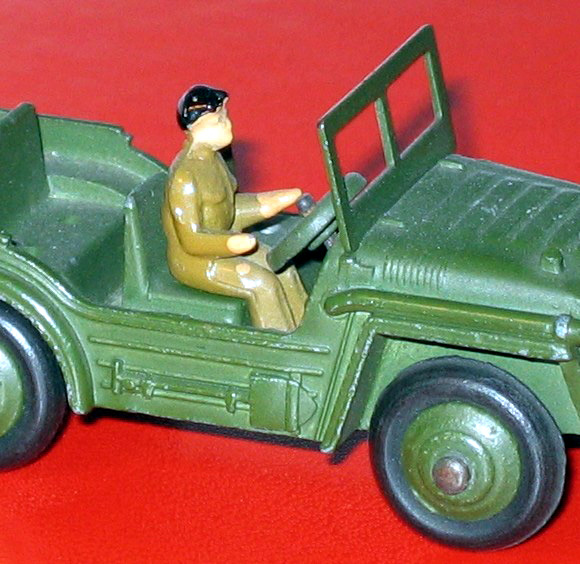
But there is more with the early one shown. That one happens to be an example of the very first batch, issued between July and end 1954, before all then available military vehicles got their drivers. Before that moment there was no standard military driver yet, the one that we all know from the regular 1950s army vehicles.

As you can see on the comparative photo above, the regular military driver had a black beret and his arms directed straight forward, as shown in the no. 673 Scout Car on the right - the other one on the left also before end 1954, without driver, but having accommodation to receive two men.
Before end 1954 the Champ was the only military vehicle with a driver, an individual one, just for the Austin Champ alone. He had no beret but black hair and his arms are more spread in comparison with the later regular one, which was introduced for the Champ end 1954 as well.
Kind regards, Jan Werner
Amazing attention to detail by Jan. In all my 50 years of collecting I had never noticed the variation in drivers or wheels on the Champ, now ther's more to search for. Well done!
On Jan's pictures below, one can notice the early diecast four spokes stering wheel and the later three spokes one made of black plastic. There MAY also be an army green plastic steering wheel but this is not confirmed. Can any one post a picture with such a green steering wheel ?
Some freshly made pictures illustrating the odd characteristics of a newly added late no. 674 Austin Champ, without driver, with dark green plastic hubs and black three spoke plastic steering wheel (no box, unfortunately). Reference works are not very clear about the presence or not of a driver on some of these models. The driver might have got lost, but I do not see the slightest trace of a possible former presence of a driver. A plastic one may have left no clearly visible damage or slighter traces. On the other hand this may have been a final desperate attempt of the factory to reduce costs, around 1970. The 1970 catalogue picture of the final appearance of this Champ might have been of use, but it still shows the older traditional version, with diecast hubs, driver etc. The dark green hubs are remarkable too, because other contemporaries have plastic hubs in a neatly matching army green colour.
Well, for the record, your opinions and comments are appreciated, kind regards, Jan
I have just received this Austin Champ with a plastic driver. It also has plastic wheels and a plastic steering wheel with 3 spokes so it is a very late version. I wasn't sure at first whether the driver was plastic but I have since weighed one with a metal driver and this is 4 grams heavier than the one with the plastic driver. The plastic driver is painted in more detail with a black beret, painted hands and face. The driver is glued securely onto the seat.
Chris
Hi Chris, that is an interesting addition. Congratulations!
In the light of my previous post you can imagine that I am curious of the exact way the driver is attached to its seat.
So there is a 'dot' of glue between its bottom and the seat? And is there still a pivot under his bottom, protruding through the seat? Perhaps you could show some more details?
If the glueing is the standard way of fixation with these late plastic drivers, it should have left traces whatsoever on mine - if it had been present initially. Kind regards, Jan
The Austin Champ in UN finish does not have holes in the seats. Are there any late army green models without these holes ?
Jan,
Here are a couple of photos which show the glue which holds the driver onto the seat. As you can see the peg extends to the underneath of the seat and you can see the glue around it. I would suggest that your Champ did not have a driver, or else it was never glued to the seat, as otherwise there would signs of the glue or even some loss of paint on the seat if the driver had been removed.
Jacques, I have never seen a late Champ without the holes in the seats, except for the UN version, but that doesn't mean there aren't any.
Chris.
That's indeed the evidence I was looking for. Thank you, Chris!
These are nice finds, Chris, the flimsy export boxes are so vulnerable that they have often gone, leaving the mint model behind. I guess this also may have happened with my two examples shown. Both came from different, non-British countries and may also have been packed in such visipac export boxes. As I found a second example recently, now with driver, I understand what may have happened with my first one. When the new addition with plastic driver arrived the driver was carefully separately packed. Indeed, it is very easy to be removed and get lost, because there is no firm fixation at all (and leaving no trace of fixation below the driver’s seat either). The pin is short and hardly sticks in place. That’s why the previous one – although hardly or not played with – must have lost its driver. I wonder if these plastic drivers were separately available in those days, but I doubt it. Anyone may comment on this. Possibly Chris’s driver was glued in with a tiny drop of glue by a previous owner in order not to get lost.
Still, my example without driver remains a remarkable one, as its plastic wheels have an undeniably darker green colour, different from the regular olive shade of green of the military models. Some photos below, my first issue with the driver with widely spread arms included. Kind regards, Jan
Dinky Toys 674 United Nations (UN) Austin Champ. In what year was the model released?
I read 1969/70 but also 1971 and 1966 till 1971.
Does anyone know the correct date?
As the seats do not have holes for the figures, the UN version must have been made after the production of the standard green version had stoped.
Then, the date for the UN version must be 1971 or 1972 but there does not seem to be any document, catalogue, assembly drawing etc... to date this version.
So basically a mystery.
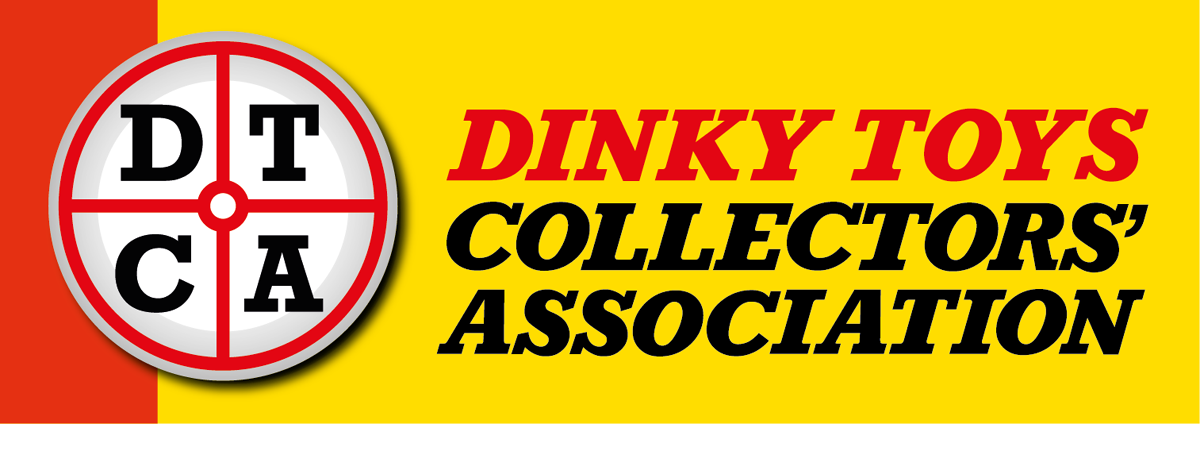




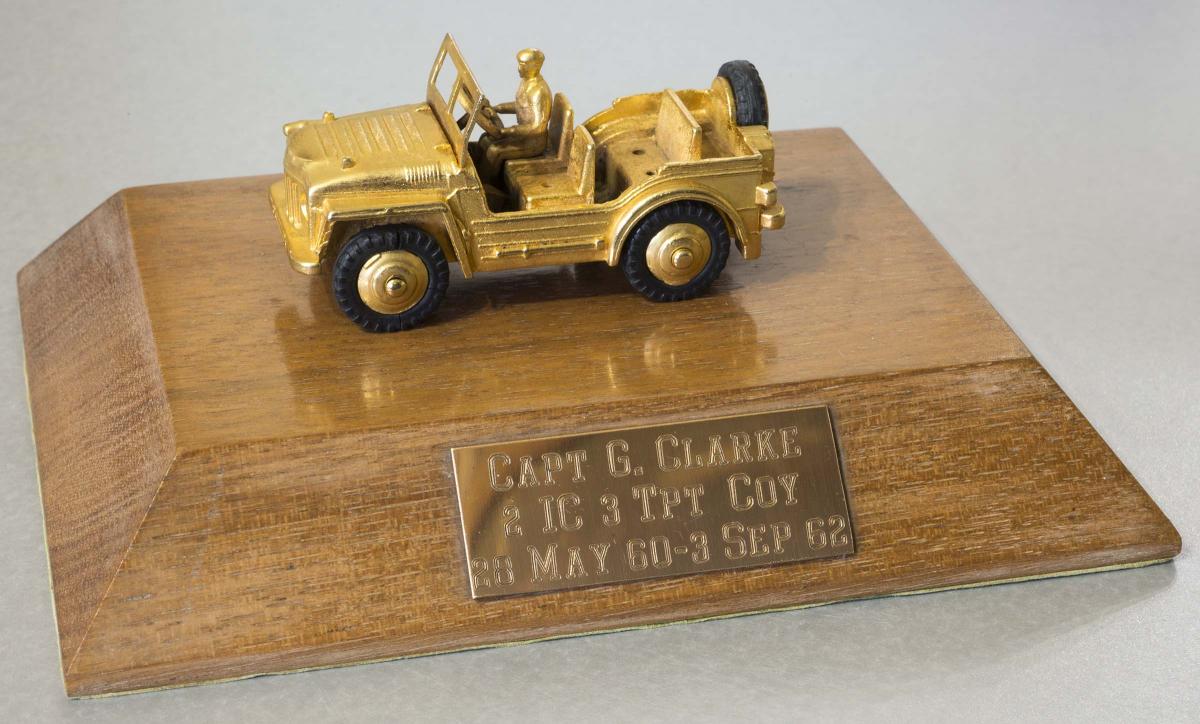
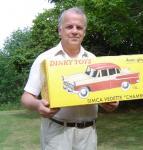
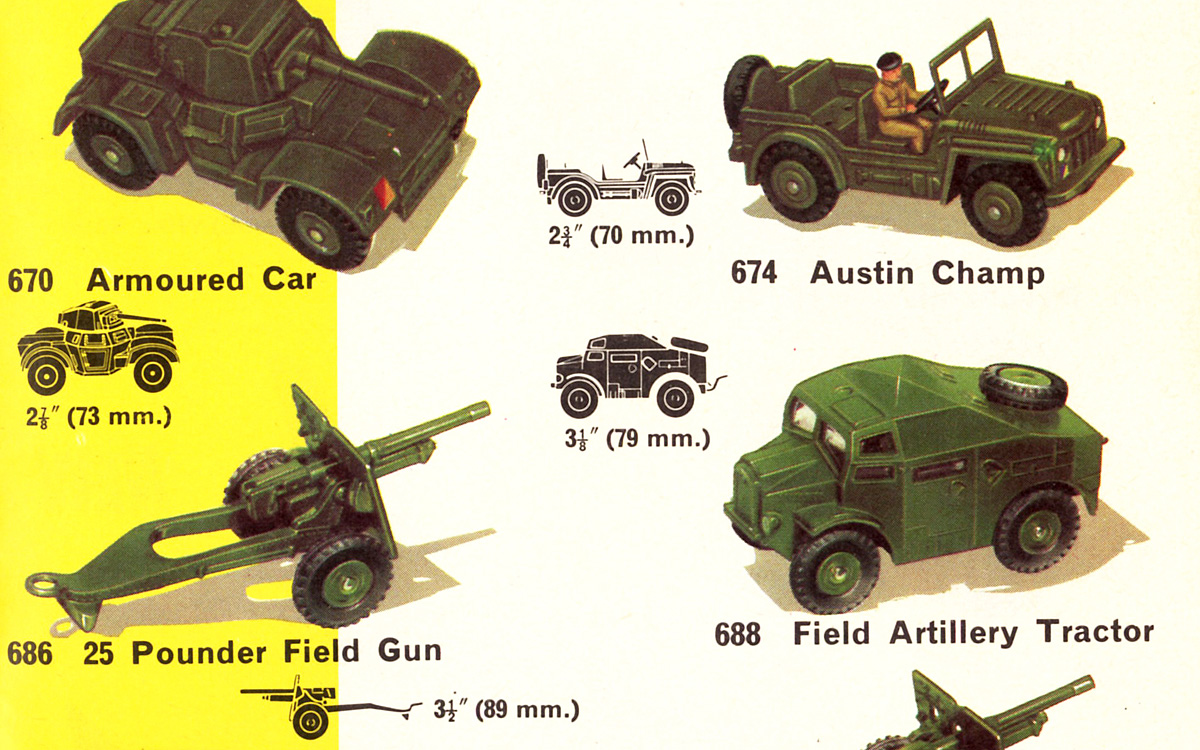
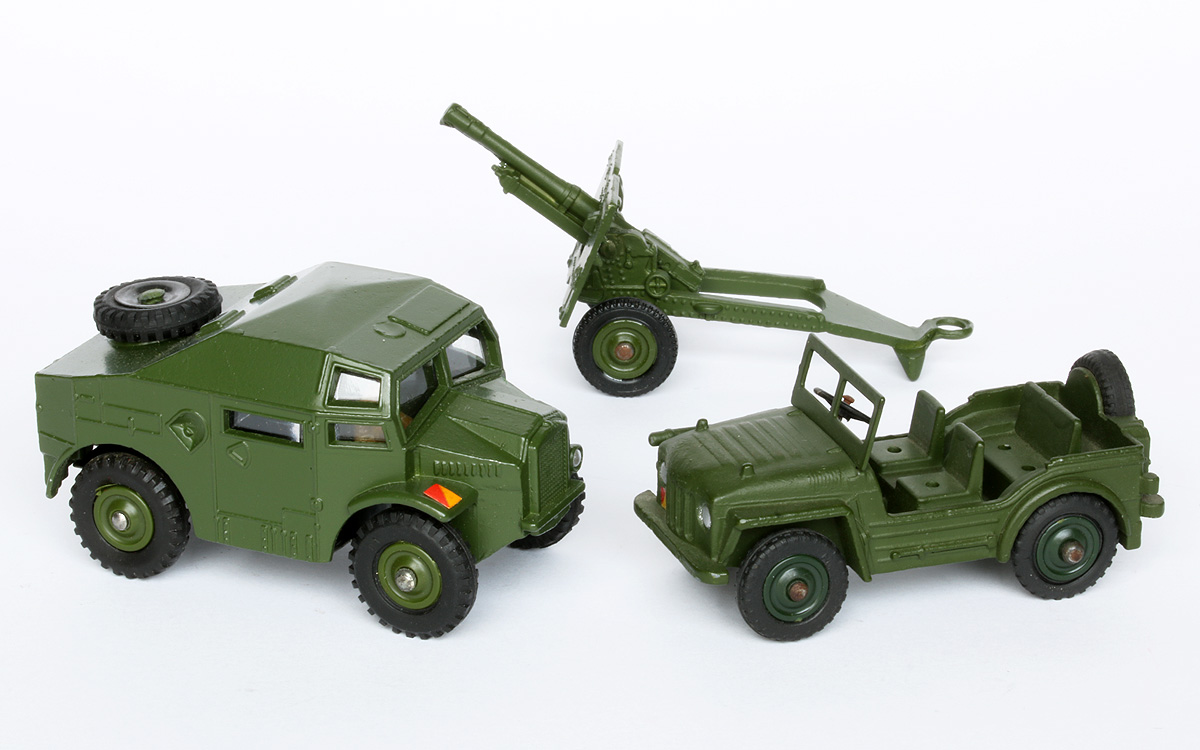
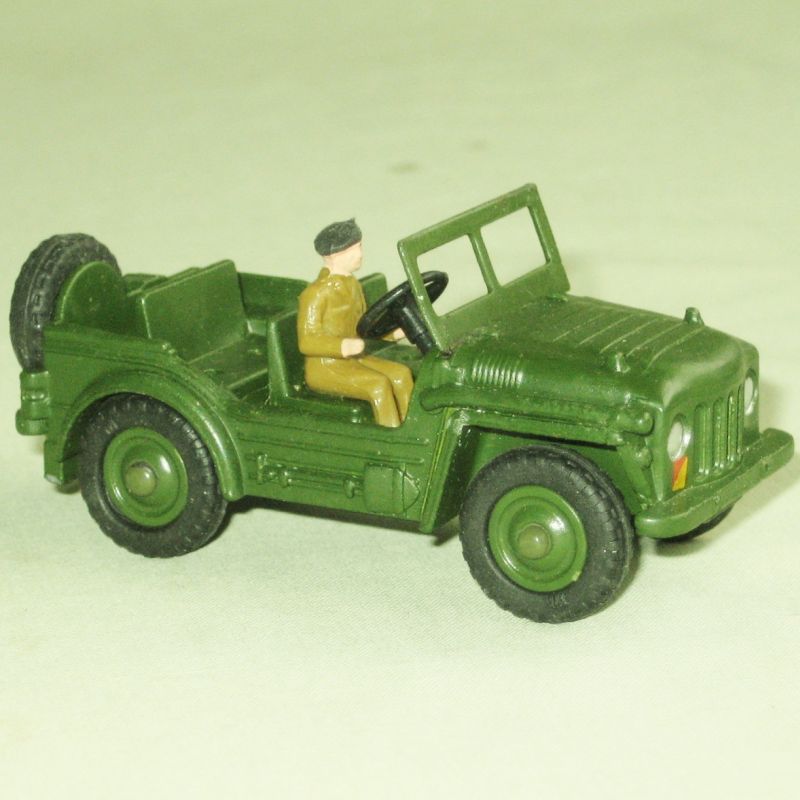
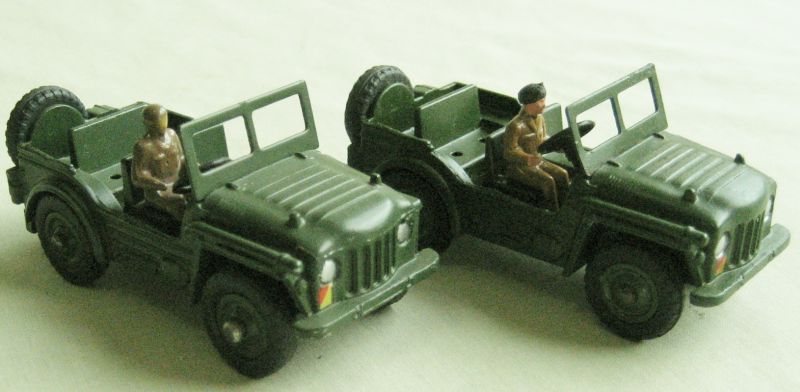
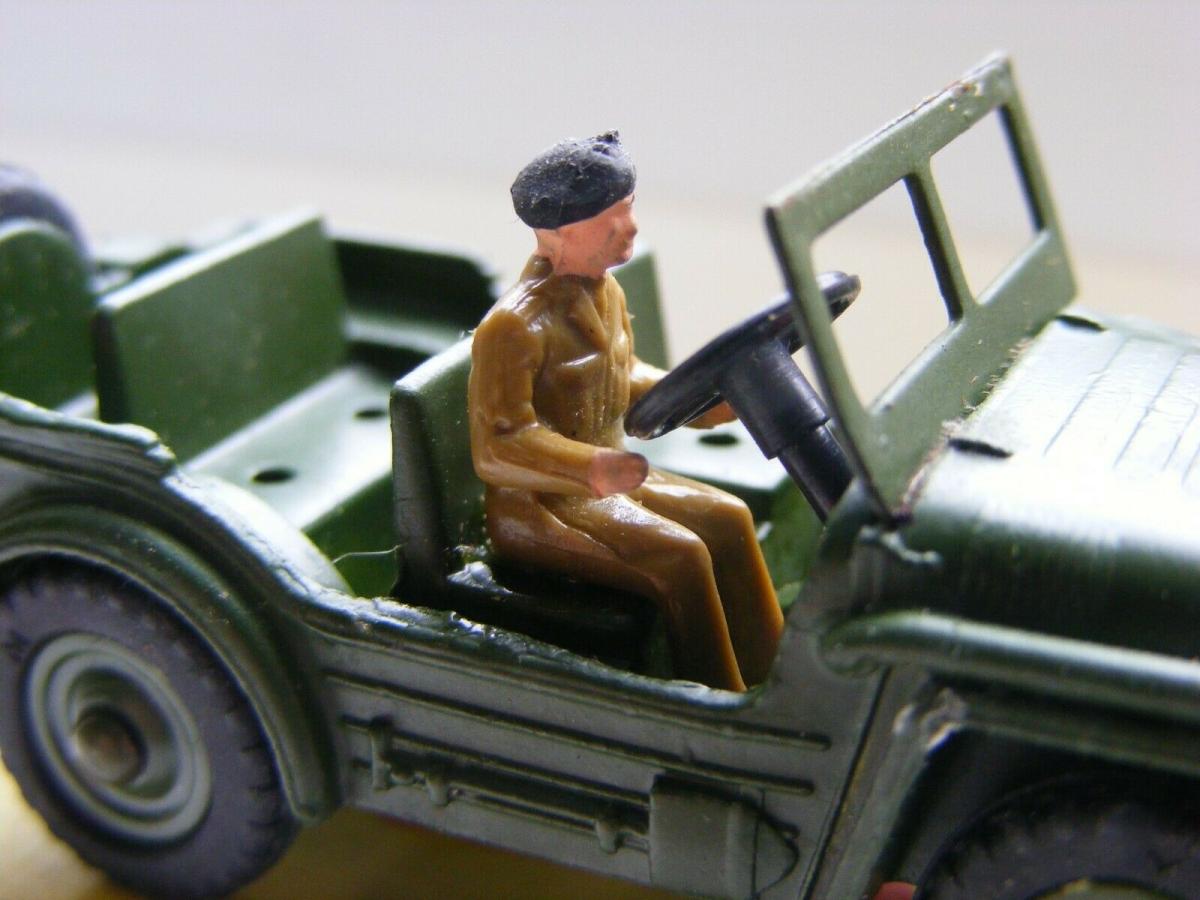
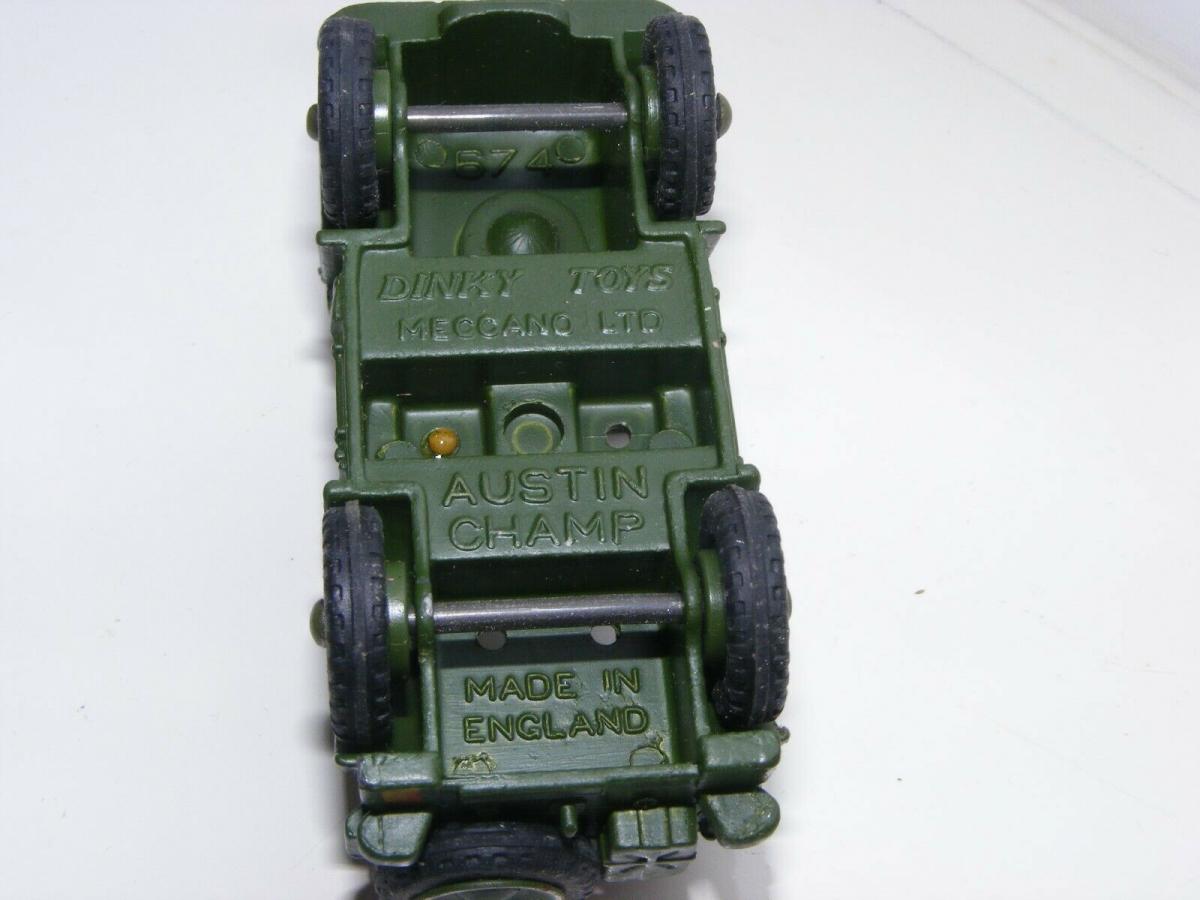

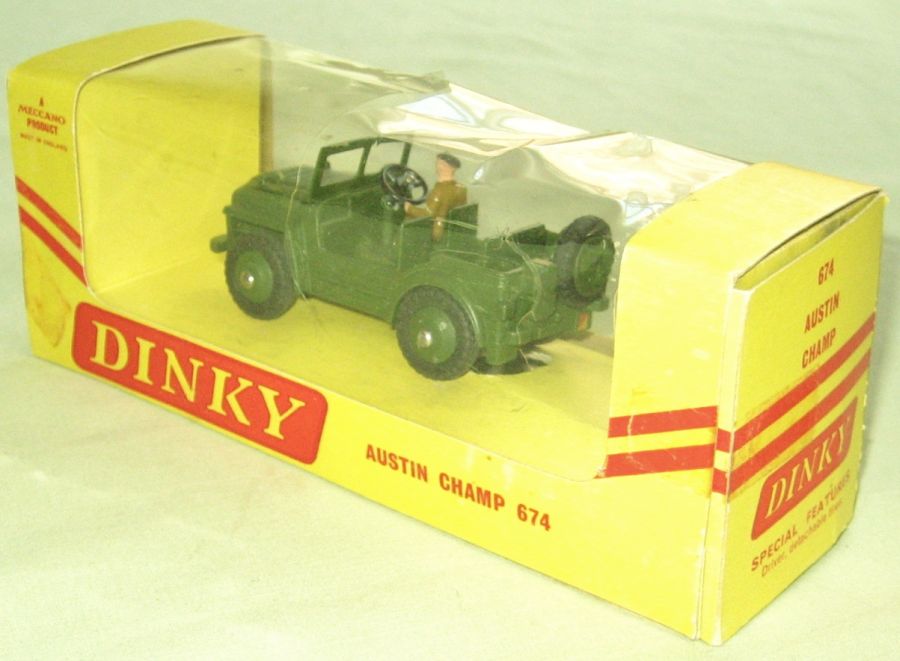
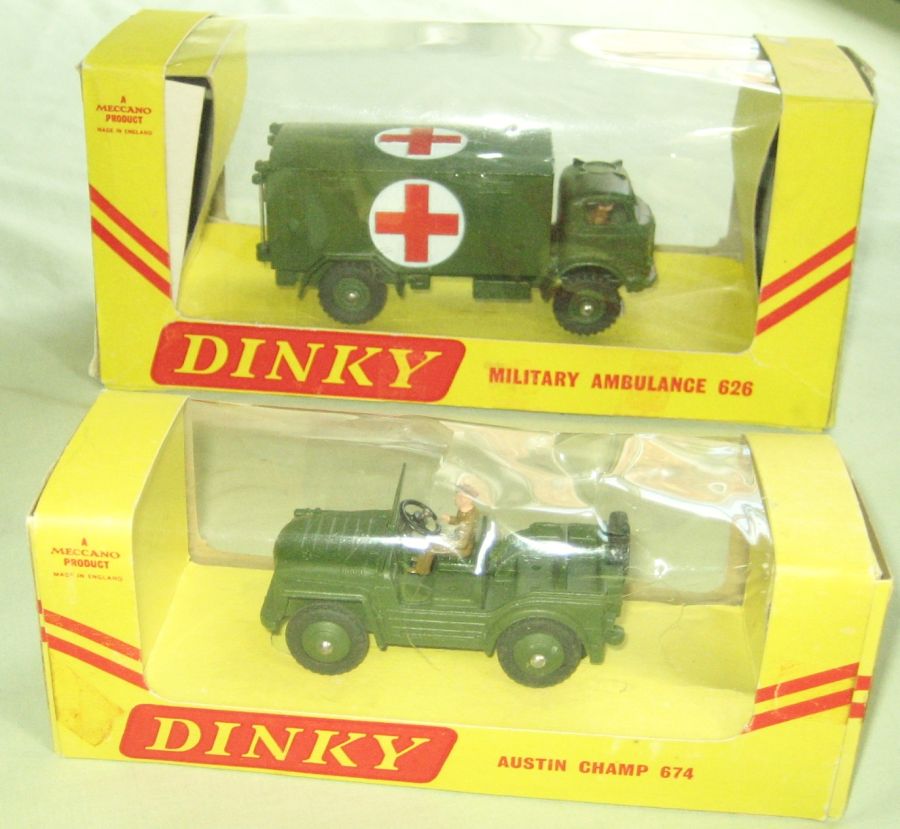
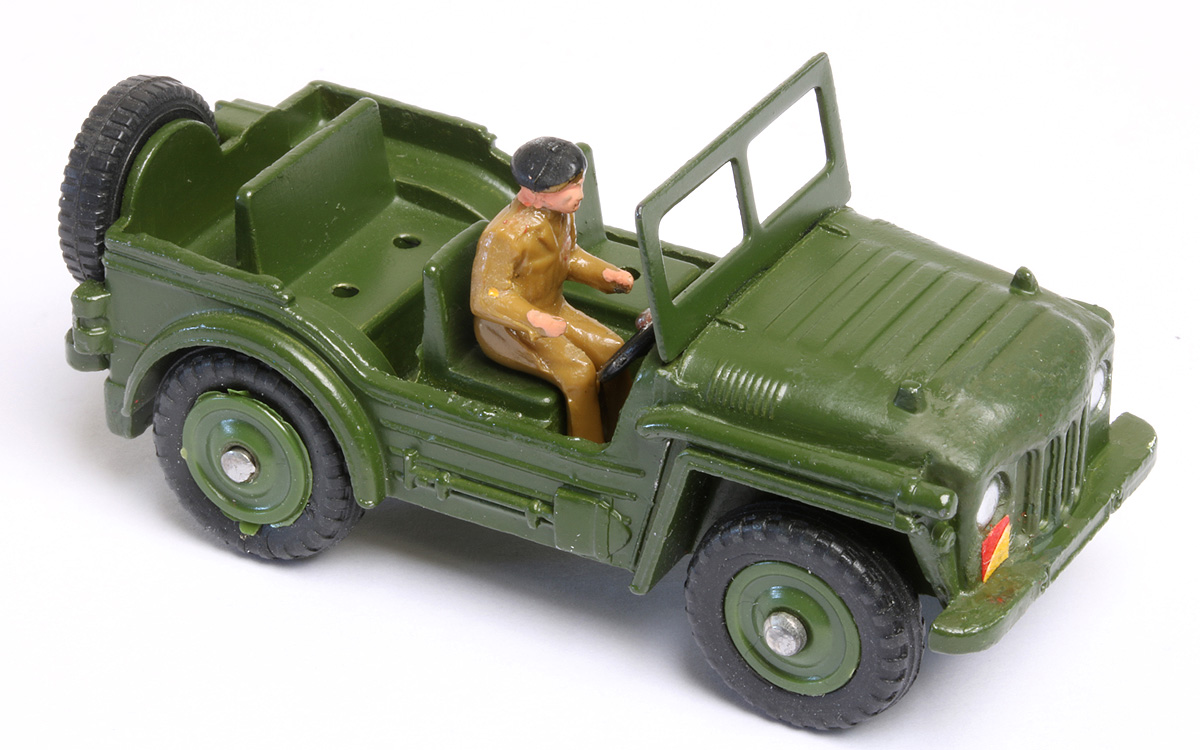
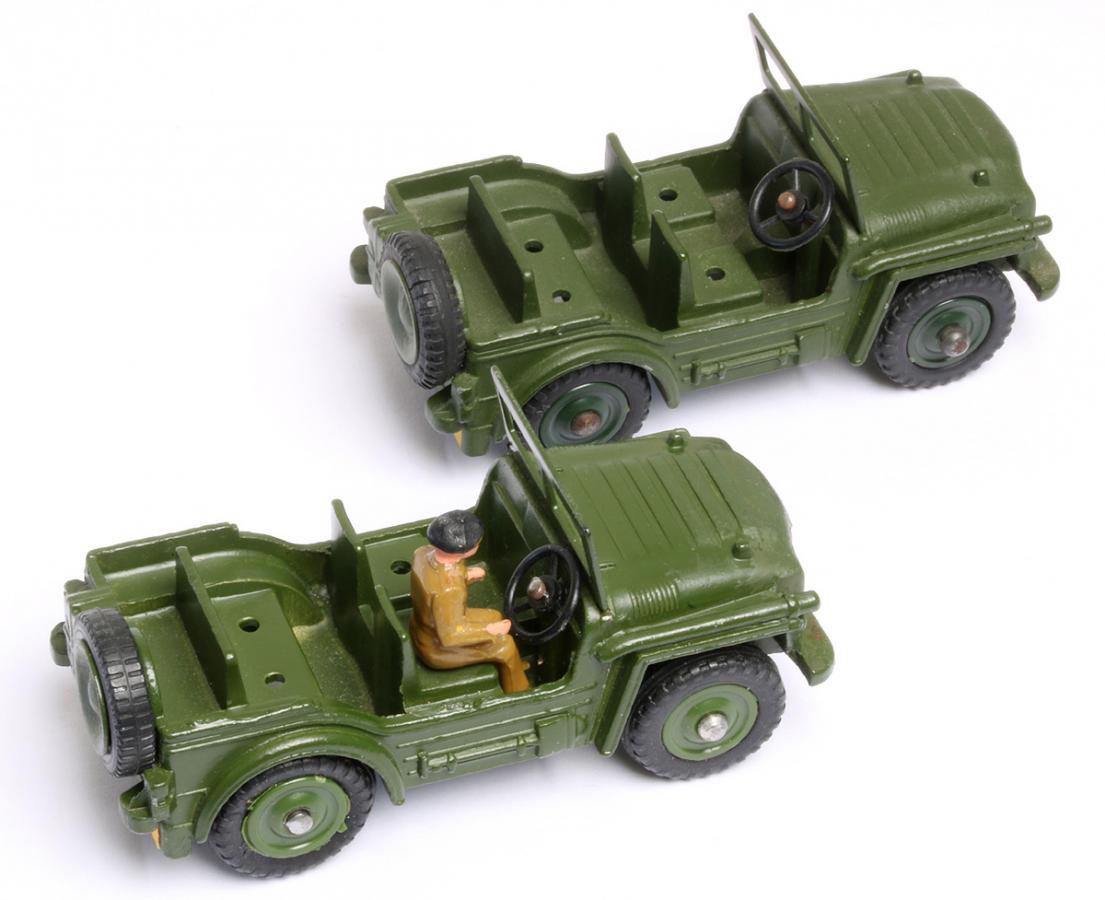
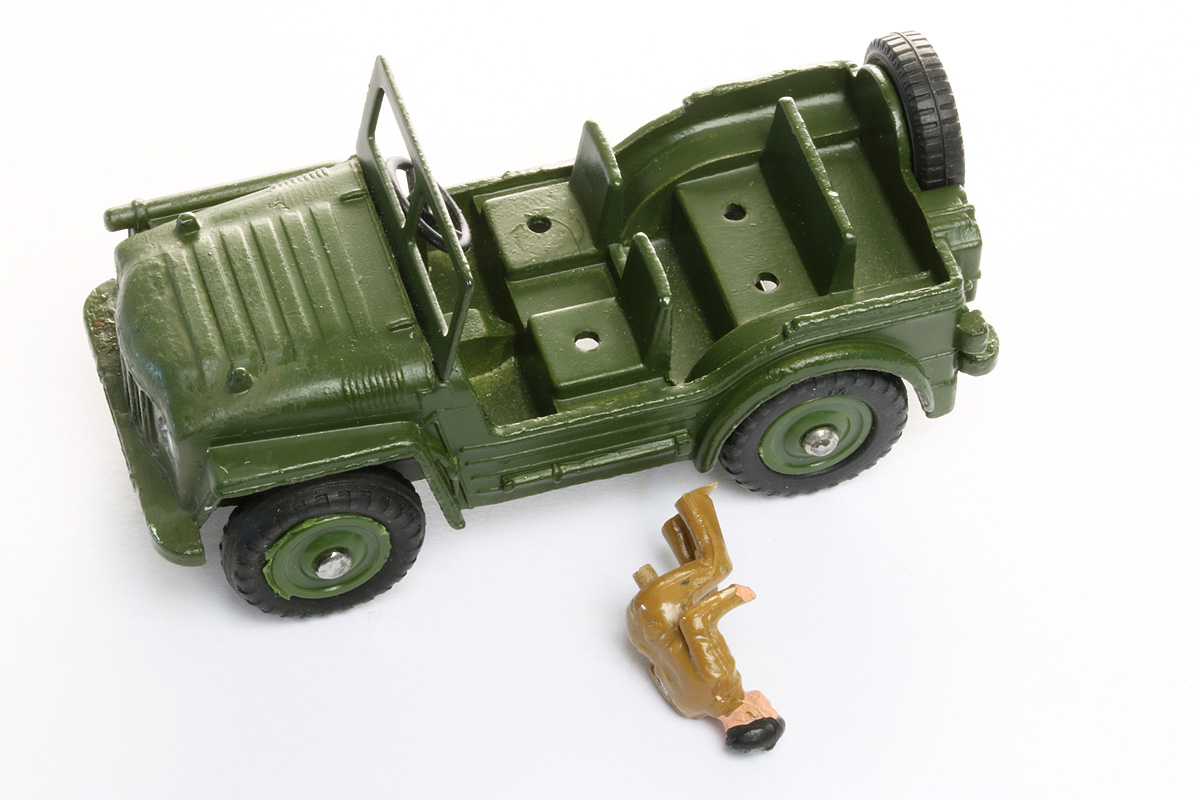
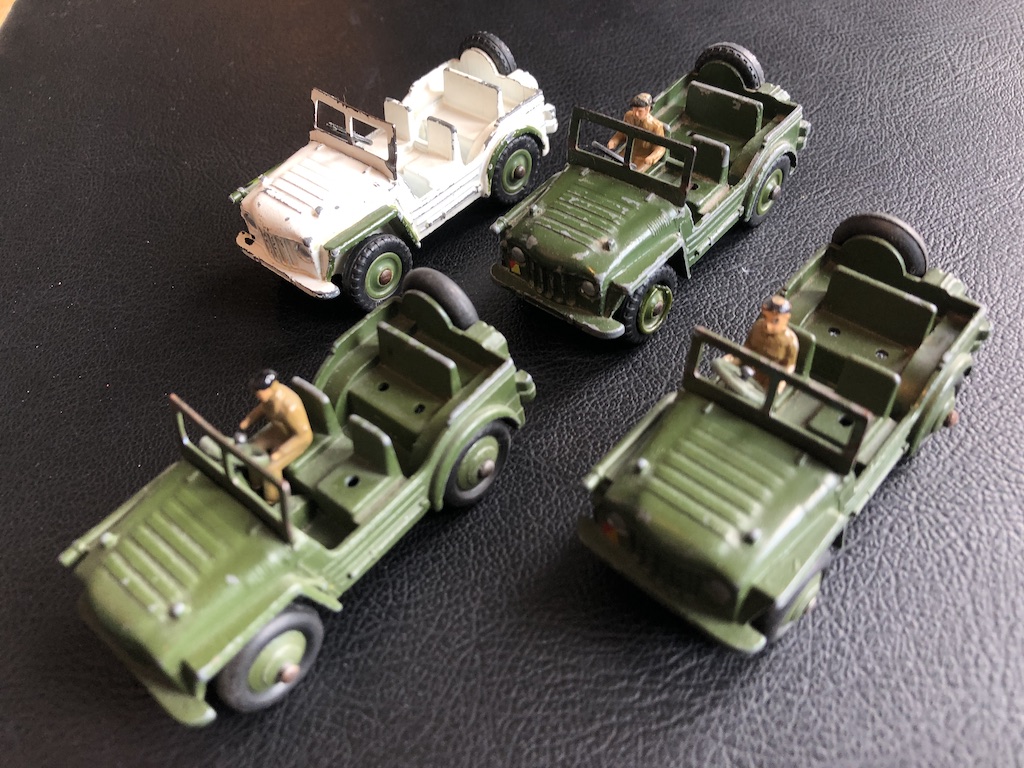
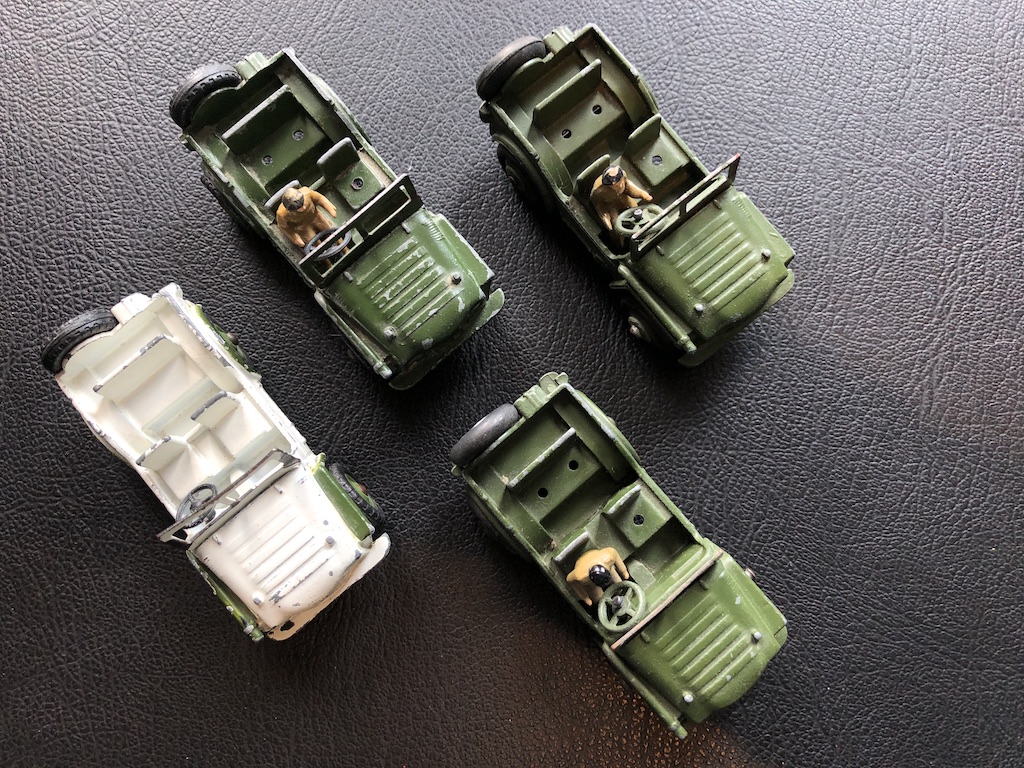
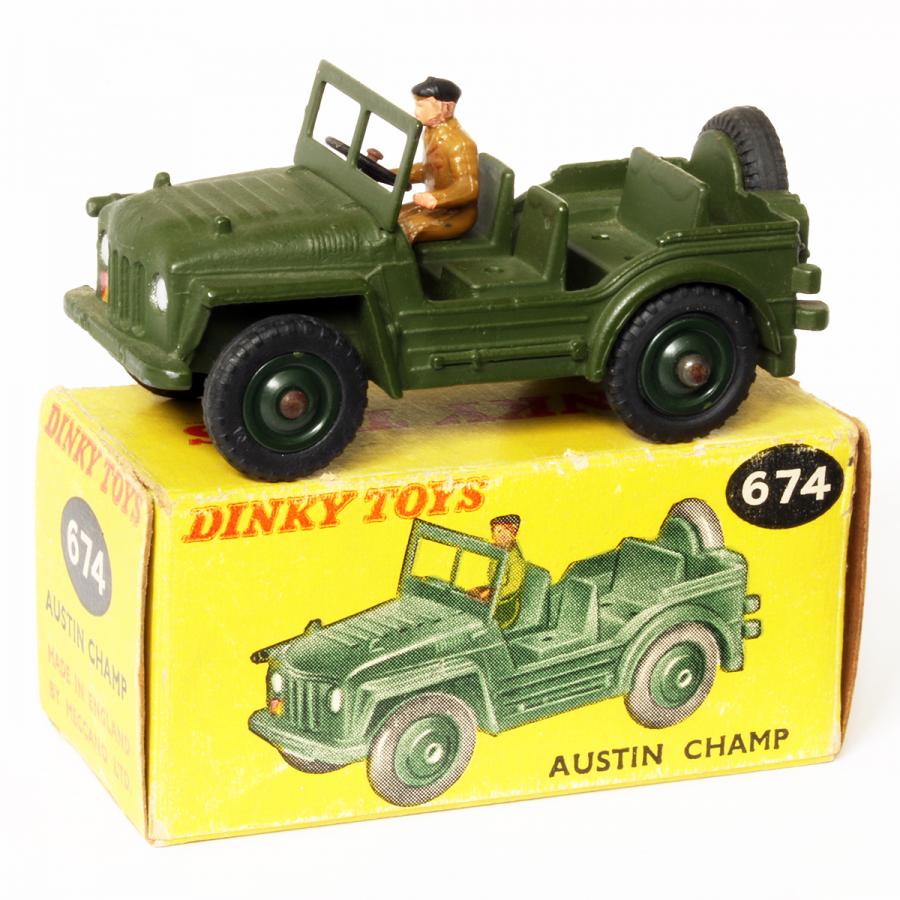
-073 Land Rover, Horse Box and Horse (1960-67)
DTCAwebsite upgrade 2023
DTCAwebsite upgrade 2023
-105c and 383 4-Wheel Hand Truck (1949-1958)
-105c and 383 4-Wheel Hand Truck (1949-1958)
DTCAwebsite upgrade 2023
DTCAwebsite upgrade 2023
DTCAwebsite upgrade 2023
DTCAwebsite upgrade 2023
DTCAwebsite upgrade 2023
DTCAwebsite upgrade 2023
DTCAwebsite upgrade 2023
DTCAwebsite upgrade 2023
DTCAwebsite upgrade 2023
DTCAwebsite upgrade 2023
DTCAwebsite upgrade 2023
DTCAwebsite upgrade 2023
DTCAwebsite upgrade 2023
--22c Motor Truck (1933-50)
--22c Motor Truck (1933-50)
DTCAwebsite upgrade 2023
DTCAwebsite upgrade 2023
Trailer Caravans
Trailer Caravans
DTCAwebsite upgrade 2023
DTCAwebsite upgrade 2023
DTCAwebsite upgrade 2023
DTCAwebsite upgrade 2023
Trailer Caravans
Trailer Caravans
-138 Hillman Imp (1963-73)
-537 Renault 16 TL
-189 Triumph Herald Saloon (1959-64)
-255 Mersey Tunnel Police Van (1955-61)
DTCAwebsite upgrade 2023